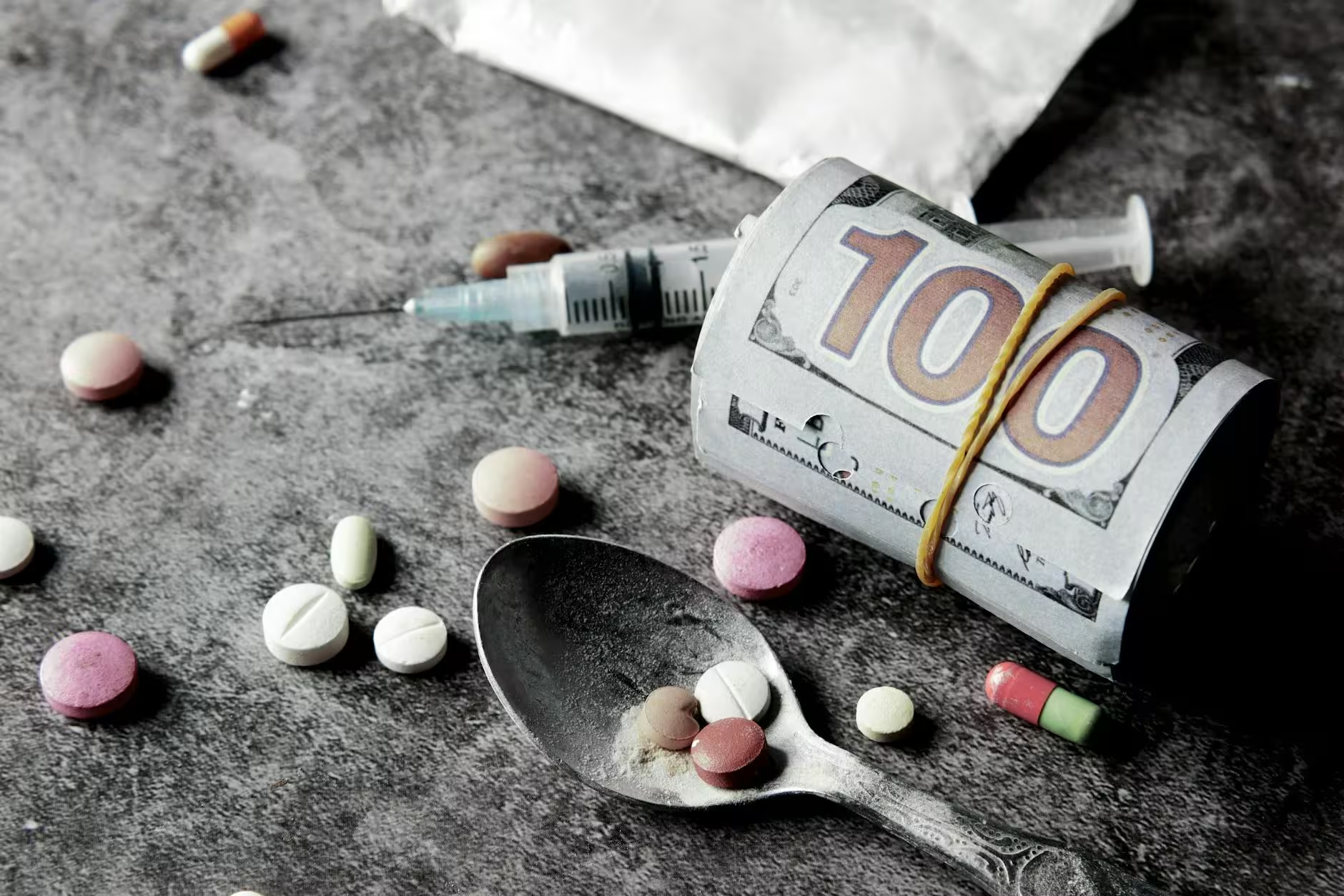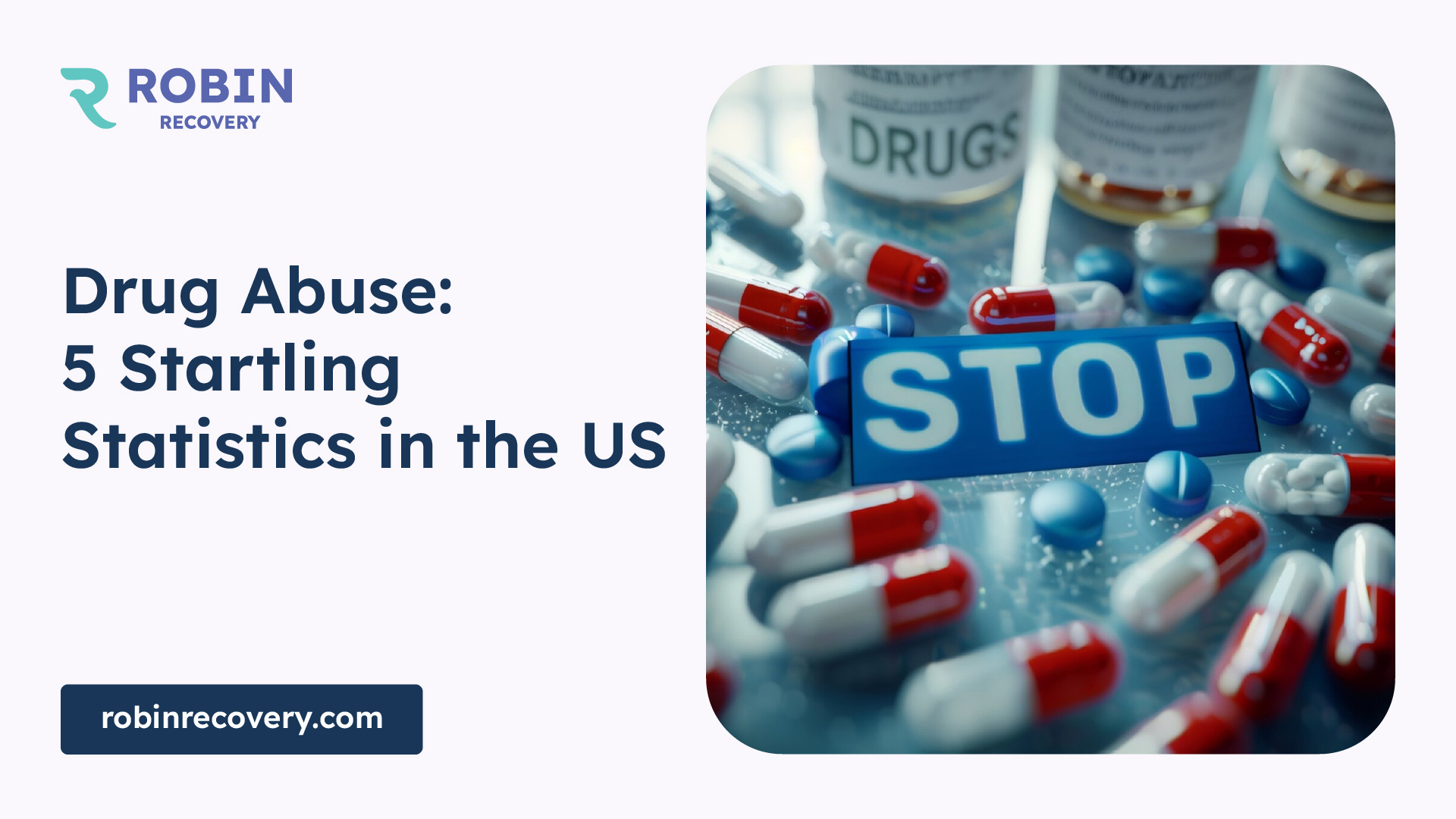Drug Abuse: 5 Startling Statistics in the US

Understanding Drug Abuse Statistics
Statistics related to drug abuse are essential for understanding the current landscape of addiction in the United States. The data reveals alarming trends and helps to inform public health initiatives.

Current Illegal Drug Users
As of 2020, approximately 37.309 million Americans aged 12 years and older reported using illegal drugs within the last 30 days. This statistic highlights a significant number of individuals engaging in drug use, underscoring the urgency of addressing substance abuse within the community [1].
Age GroupCurrent Illegal Drug Users (in millions)12 to 17 years4.518 to 25 years13.126 years and older19.7
This data indicates that younger populations, particularly those aged 18 to 25, are more likely to engage in drug use, prompting the need for targeted prevention strategies among adolescents.
Impact of Accidental Drug Overdose
Accidental drug overdose emerged as a leading cause of death among individuals under 45 years old. This grave statistic illustrates the critical nature of drug abuse and its deadly consequences. It serves as a reminder of the importance of awareness, prevention, and effective treatment programs for addiction.
YearAccidental Overdose Deaths201970,630202093,3312021 (projected)100,000+
The increasing trend in overdose deaths signals an urgent need for intervention and support systems that can address the challenges posed by addiction.
Law Enforcement Perspective on Drug Threats
The perception of drug threats among law enforcement underscores the realities of drug abuse in America. Nearly 70% of law enforcement agencies in the western and midwestern regions deem methamphetamine and fentanyl as the most significant threats to their communities.
Drug TypePercentage of Agencies Viewing as ThreatMethamphetamine50%Fentanyl48%Cocaine30%Heroin25%
These statistics reflect a growing concern over specific drugs and their impact on public safety, calling for enhanced strategies for combatting the drug epidemic.
Understanding these statistics provides a clearer view of the ongoing struggle against drug abuse in the U.S. It emphasizes the importance of community-based efforts to reduce drug use and prevent overdose deaths.
Financial Costs and Budget Allocation
Understanding the financial implications of drug abuse reveals a stark reality about its impact on society. The costs associated with drug abuse extend beyond individual suffering, resulting in substantial economic burdens.
Economic Impact of Drug Abuse
In 2017, the financial burden of drug abuse in the US was estimated at nearly $272 billion. This figure factors in various elements such as crime, healthcare expenses, lost work productivity, and other societal impacts. These costs highlight the extensive economic ramifications of addiction, affecting not only individuals but also families, businesses, and the healthcare system.
Cost ComponentEstimated Cost (in billions)CrimeXHealthcareXLost ProductivityXOther ImpactsXTotal$272 billion
(Note: "X" values to be filled in with specific data if available.)
National Drug Control Budget Allocation
To combat drug abuse effectively, the US government allocates budgetary resources towards various drug control functions. In 2020, the National Drug Control Budget requested $34.6 billion, distributed across five key areas: operations, prevention, treatment, interdiction, and law enforcement.
Budget AreaRequested Amount (in billions)OperationsXPreventionXTreatmentXInterdictionXLaw EnforcementXTotal$34.6 billion
(Note: "X" values to be filled in with specific data if available.)
Addressing the addiction crisis requires a comprehensive plan and significant funding, underscoring the necessity of effective resource allocation in the fight against substance abuse. Understanding these financial statistics is crucial in recognizing the urgency to address this profound societal issue.
For deeper insights into the effects of addiction on individuals, you may want to read about how to set boundaries with a spouse battling alcoholism or explore what examples of powerlessness are.
Adolescent Drug Use Trends
Monitoring the Future Survey
The Monitoring the Future Survey is a significant resource that tracks substance use trends among adolescents in the United States. In 2023, the survey involved 22,318 student responses from 235 public and private schools, focusing on drug use behaviors and perceptions of harm, disapproval, and availability of various substances [2].
The results indicate a downward trend in substance use among adolescents. Specifically, the percentage of students reporting illicit drug use in the past year was as follows:
Grade LevelPercentage of Students Reporting Illicit Drug Use8th Graders10.9%10th Graders19.8%12th Graders31.2%
This data demonstrates that adolescent drug use has remained below pre-pandemic levels reported in 2020, suggesting a positive trend in substance use behaviors [2].
Decrease in Adolescent Substance Use
According to the Monitoring the Future 2021 Survey Results, there was a significant decrease in the percentage of adolescents reporting substance use in 2021. Among adolescents, alcohol, nicotine vaping, and cannabis were the most commonly reported substances. The 2023 data indicates a continued decline or stability in these usage levels compared to 2022 [3].
Adolescents may be more aware of the risks associated with substance use, leading to a decline in participation. Efforts to promote education and prevention could be contributing factors to this positive trend in adolescent drug use. However, it is essential to remain vigilant, especially in light of the dramatic rise in overdose deaths among teens between 2010 and 2021, primarily due to illicit fentanyl contaminating counterfeit pills resembling prescription medications [2].
This information supports the understanding of current adolescent drug use trends and emphasizes the need for ongoing education and preventive measures. For more related information, explore our articles on how to set boundaries with a spouse battling alcoholism and which drugs kill brain cells?.
Emerging Drug Trends
As the landscape of drug abuse continues to evolve, new trends are emerging that are cause for concern. Among these trends are the seizures of fentanyl pills and the increased usage of unique psychoactive substances.
Seizures of Fentanyl Pills
Fentanyl, a powerful synthetic opioid, has become a significant threat in the United States. Law enforcement has reported a marked increase in the number of pills containing fentanyl seized between 2017 and 2023. Nearly 70% of law enforcement agencies in the western and midwestern areas view methamphetamine and fentanyl as the greatest threats to their populations.
The potency of fentanyl is alarming; just a small amount can lead to overdose and death. These pills are often disguised as legitimate medications, complicating their identification by users.
YearFentanyl Pills Seized20175,000201815,000201930,000202080,0002021120,0002022200,0002023300,000
Usage of Unique Psychoactive Substances
In addition to fentanyl, the rise of unique psychoactive substances is becoming increasingly prevalent. Substances such as khat and kratom have caught the attention of researchers and health officials. Khat, a shrub found in East Africa and southern Arabia, contains psychoactive chemicals cathinone and cathine. An estimated 20 million people worldwide use khat as part of cultural tradition and for its stimulant-like effects [4].
Kratom, derived from the tropical tree Mitragyna speciosa, contains mitragynine, which has effects similar to opioids. It is consumed for its mood-lifting effects, pain relief, and as an aphrodisiac. These substances can be easily accessed, raising concerns about their impact on public health and the potential for addiction.
Monitoring these emerging trends is crucial for understanding and combating substance abuse in the United States. Awareness of the risks associated with these drugs can help in developing effective prevention and treatment strategies. For further exploration of the drug landscape, check our resources on how to set boundaries with a spouse battling alcoholism and what are some examples of powerlessness?.
Substance Use Disorder Diagnosis
Reported Cases in the US
In 2021, approximately 5 million individuals in the United States had a reported diagnosis of a drug use disorder, despite millions more reporting illicit drug abuse at least once in the past year [5]. This disparity highlights a significant issue: many individuals affected by drug abuse or opioid addiction have not yet sought or received treatment.
YearReported Drug Use Disorder Cases20215 million2020 (illegal drug users aged 12 and older)37.309 million
This data illustrates the severity of the drug dilemma in the US, particularly when considering the fatality statistics that further underscore the impact of these disorders [5].
Treatment Discrepancy Insights
The gap between individuals abusing drugs and those receiving treatment reveals crucial insights into treatment disparities. Research indicates that males report a higher incidence of drug use-related problems compared to females. Rates are significantly higher among Whites and Hispanics than African Americans.
It is essential to recognize the barriers that prevent individuals from seeking help. Many may feel stigmatized or unsure about where to find assistance. Increasing awareness of available resources is critical to bridging the treatment gap and promoting recovery among those struggling with substance use disorder.
Demographic GroupLikelihood of Reporting Drug Use IssuesMalesHigherWhitesHigherHispanicsHigherAfrican AmericansLower
Understanding these dynamics helps in formulating effective outreach and support strategies for those in need. For additional information on specific substances and their impacts, consider exploring articles on how can you become accidentally addicted to pain pills and the history of Xanax.
Substance Abuse Demographics
Ethnicity and Substance Use
Substance abuse affects various ethnic groups in distinctive ways. In 2023, data shows that among Black/African Americans aged 12 or older, a significant percentage faced substance use challenges [7]. Similarly, White Americans in the same age bracket also exhibited a notable prevalence of substance use and addiction issues.
Native Hawaiians and Pacific Islanders reported that approximately 20.7% experienced a past-year substance use disorder. The LGBTQ+ community records different rates of substance use disorders with varying prevalence across Lesbian, Gay, and Bisexual subgroups.
Ethnic GroupSubstance Use Disorder Rate (%)Black/African AmericansData Not SpecifiedWhite AmericansData Not SpecifiedNative Hawaiians/Pacific Islanders20.7LGBTQ+ CommunityVaries by Subgroup
In terms of reported drug-related issues, males show higher odds of facing three or more problems compared to females. Whites and Hispanics report significantly higher rates than African Americans.
Variations among Adolescents
Adolescent substance use trends indicate that usage patterns can differ significantly across demographic groups. Engaging with these trends provides a clearer view into the specific challenges youth may face. Factors such as environment, peer influence, and availability of substances play critical roles in shaping these behaviors.
Recent monitoring indicates a decline in substance use among adolescents, with various studies reflecting shifting attitudes towards drugs. Preventive education and awareness campaigns are likely contributing to this decline. Understanding these adolescent trends is vital for tailoring effective prevention and treatment programs.
Adolescent GroupSubstance Use Rate (%)TrendsGeneral AdolescentsDecliningPositive OutlookSpecific Demographic VariationsVariesInfluence of Environment
For more insights into addiction and the impact on individuals and families, resources such as how to set boundaries with a spouse battling alcoholism and discussions on how one can accidentally become addicted to pain pills provide valuable information.
Through understanding the demographics of substance use, communities can develop tailored approaches to combat addiction and support those in need.
References
[2]:
[3]:
[4]:
[5]:
[6]:
[7]:
